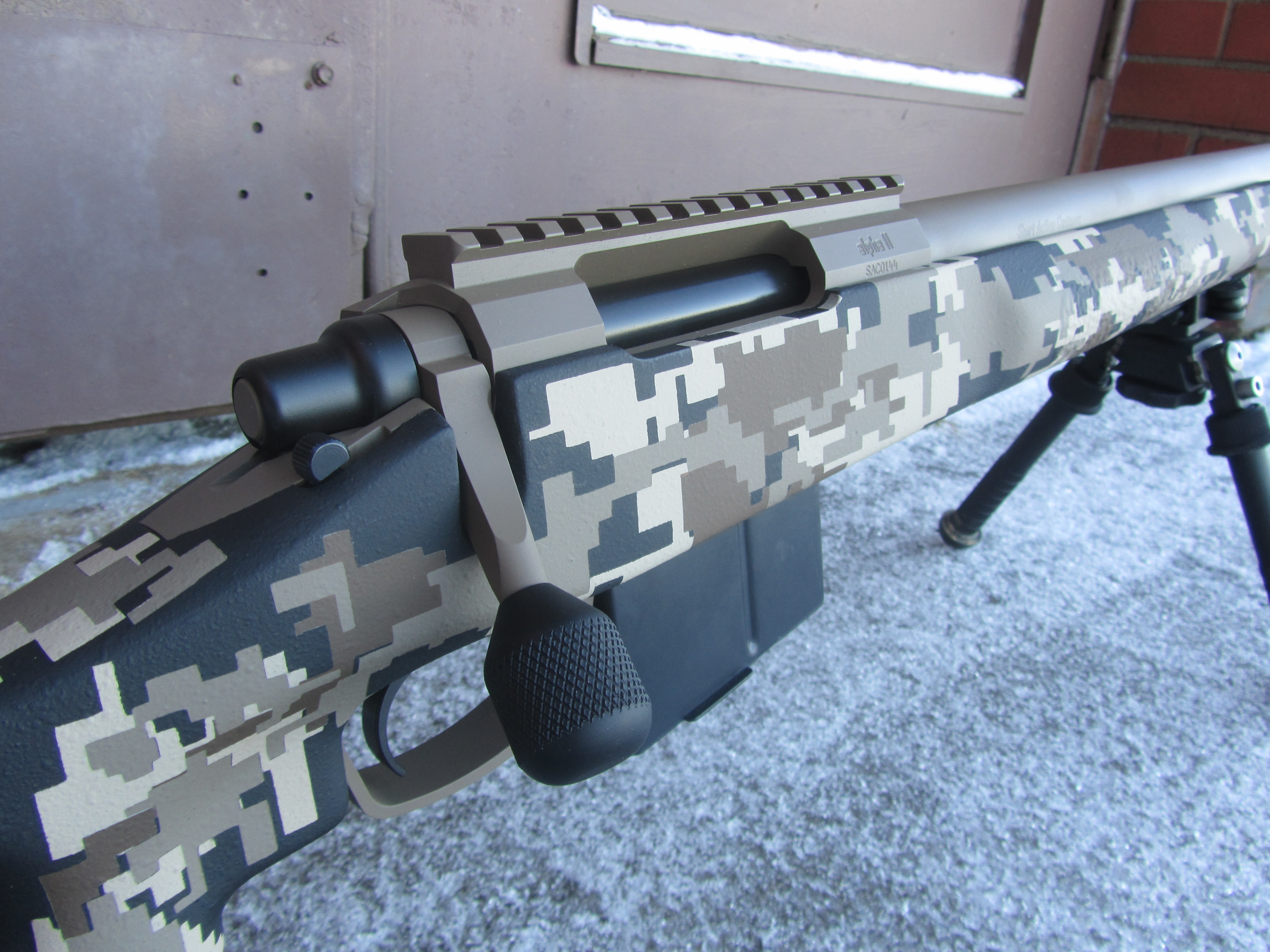
.45-70 Rifle
The stylish Henry Octagon in .45-70 Government is a hardworking short-range rifle with a quick and smooth action.
STORY & PHOTOS BY OLEG VOLK
For a cartridge introduced in 1873, the .45-70 Government has enjoyed some serious staying power. The same may be said of lever-action rifles that date back a decade further. The combination of the two, first made in 1881, logically joined two good things into something perennially popular.

Today, several companies make such rifles. Henry offers three models, with the Octagon being the most visually striking of the lot. The fit of the metal and wood is tight, and the finish is even and well applied.
A 22-inch blued octagonal barrel is installed on a brass receiver, with brass buttplate on a straight-grip stock of quality walnut completing the first impression. Weighing in at about 8 pounds, the rifle feels substantial without appearing heavy. For field carry, it comes with sling swivel studs already installed.
The magazine tube holds four cartridges and loads from a port underneath, the same as Henry’s rimfire rifles. While slower than gate loading, this approach is easier on the shooter’s fingers and doesn’t damage soft bullet points. And, considering the power of the .45-70 cartridge, 4+1 capacity is generally sufficient.

WHILE HISTORIC .45-70 LOADS used bullets in the 405- to 500-grain range, most modern hunting ammunition is 300 grains. Loads such as Winchester and Federal with expanding bullets develop velocities in the high 1,800s, and recoil is correspondingly brisk. For this reason, a slipon recoil pad is a recommended accessory.
For people who use .45-70 for fun rather than hunting, such as cowboy action shooters, Velocity Munitions sells a mild 1,100-foot-per-second cast-lead load that makes this rifle an absolute pleasure to run. Other companies make more specialized loads, including Hornady with Leverlution polymer-tipped 325-grain, Lehigh Defense with Xtreme Penetrator fragmenting and multiple projectile rounds, and Buffalo Bore with several hot-loaded magnums in the 3,600-foot-pound muzzle-energy range. The magnum loads, however, are not recommended for use in Henry rifles, as regular 300-grain loads only develop 2,600 to 3,000 foot pounds. The intensity of recoil and muzzle rise with the extraenergetic ammunition can get unpleasant.

While the rifle comes with open sights – brass-bead front post and semibuckhorn rear – the receiver is also tapped for a Weaver 63B or EGW Marlin Picatinny Rail. Having conducted accuracy testing with a 1-4x Trijicon Accupower scope, I would recommend a mildly magnified optic only if you intend to hunt past 75 yards. Up to that distance, and especially for dangerous game, a red dot would be slightly quicker, a little closer to the bore, and more appropriate to the mechanical accuracy of the firearm.
Since the Henry Octagon is intended to be a short-range rifle, the 3MOA dispersion is irrelevant. At 25 yards, it amounts to a 3/16-inch maximum deviation from the point of aim on targets that have much larger vital zones.
THE LEVER ACTION ITSELF is quick and smooth, with the trigger crisp but a bit on the heavy side. Again, for a dangerous game rifle, that’s an appropriate design decision that makes accidental discharges under stress less likely. At the same time, it’s unburdened by the dangerously senseless “lawyer” cross-bolt safeties that plague the current Winchester and Marlin competitors. Those block only the striker, making a trigger pull while on safe appear to be a misfire. The Henry has a transfer block, so “safe” is carrying with the hammer down on a live round.
Of the three models Henry offers in .45-70, the All-Weather, the round barrel carbine, and the brass-receiver Octagon, the last is the most stylish. It also brings 4 extra inches of sight radius to the game, along with a slight uptick in velocity and less glare in backlight, thanks to the faceted barrel. It’s also the only one with the oversized lever look for easier use while wearing thick gloves. Strictly from the stylistic perspective, it would look best with some traditional-looking low-magnification scope.

Among the rifle’s appeals is its simplicity of maintenance: just open the action and undo the lever retention screw. The lever then comes out, and the bolt follows. For normal cleaning, that is the full extent of the disassembly required.
The Octagon .45-70 is a fashion statement as much as it is a capable tool. But unlike most fashion statements, it’s timeless, eminently practical, and will most likely become a multi-generational heirloom. MSRP is $950.

For more, see henryrifles.com. ASJ



